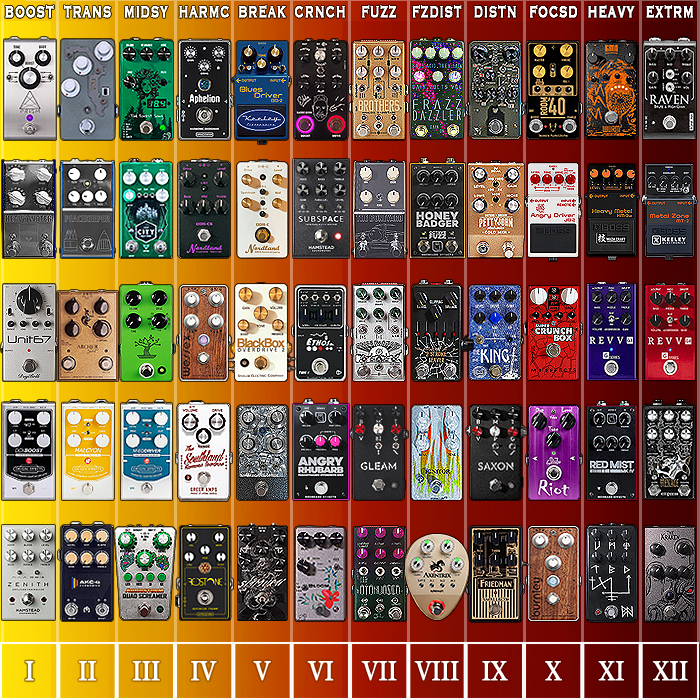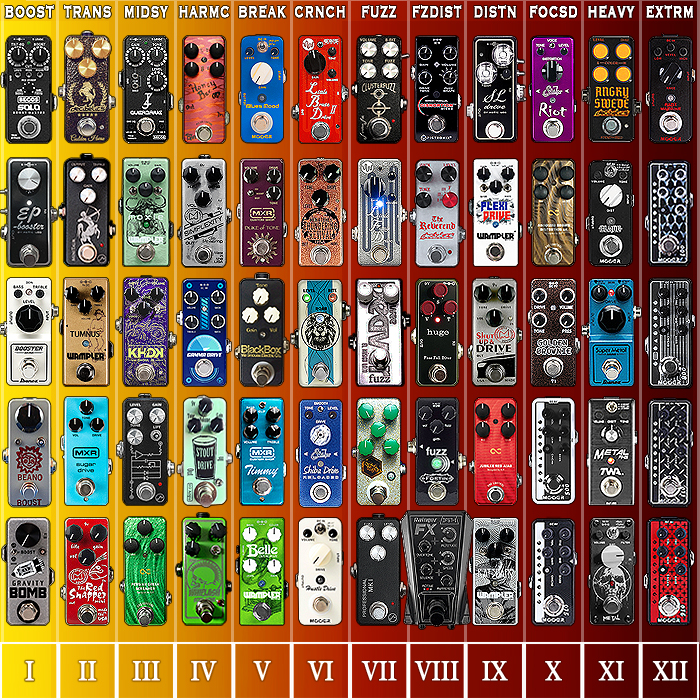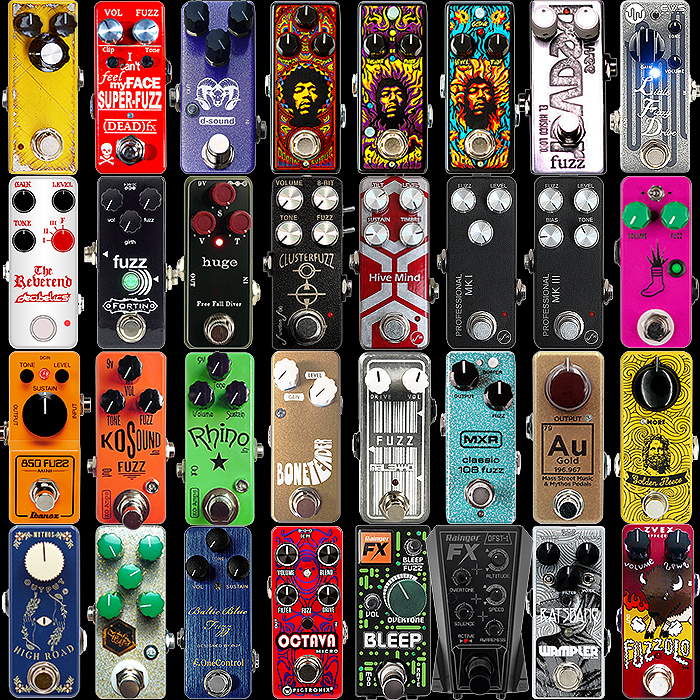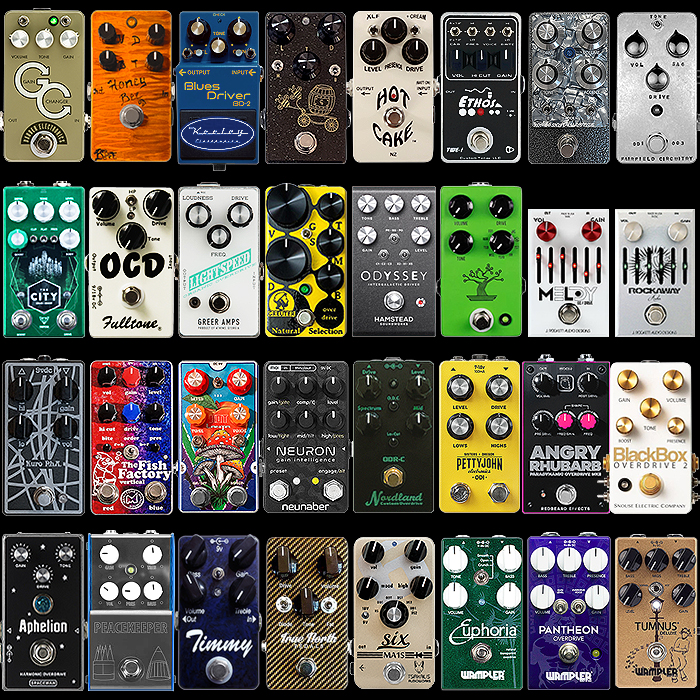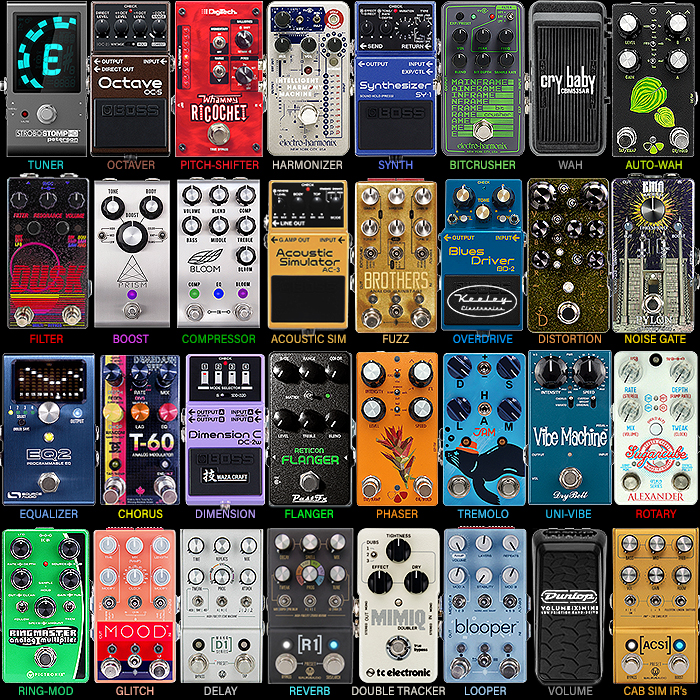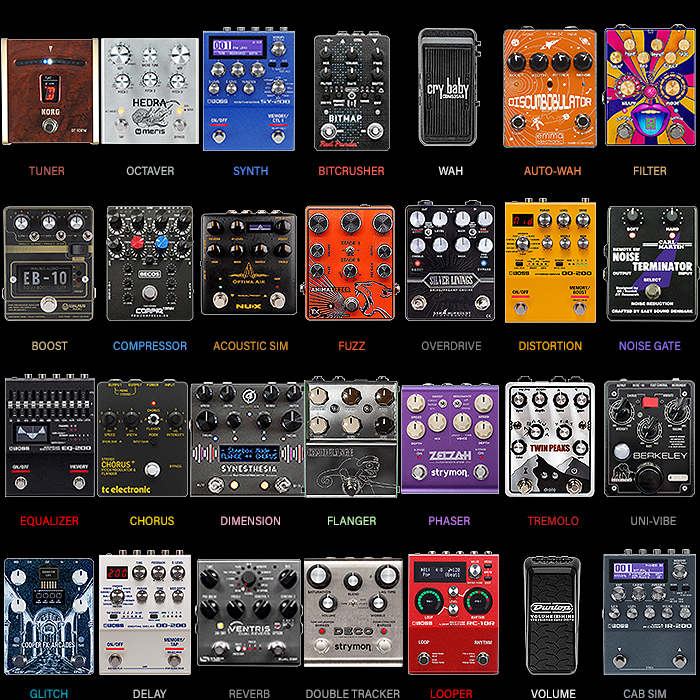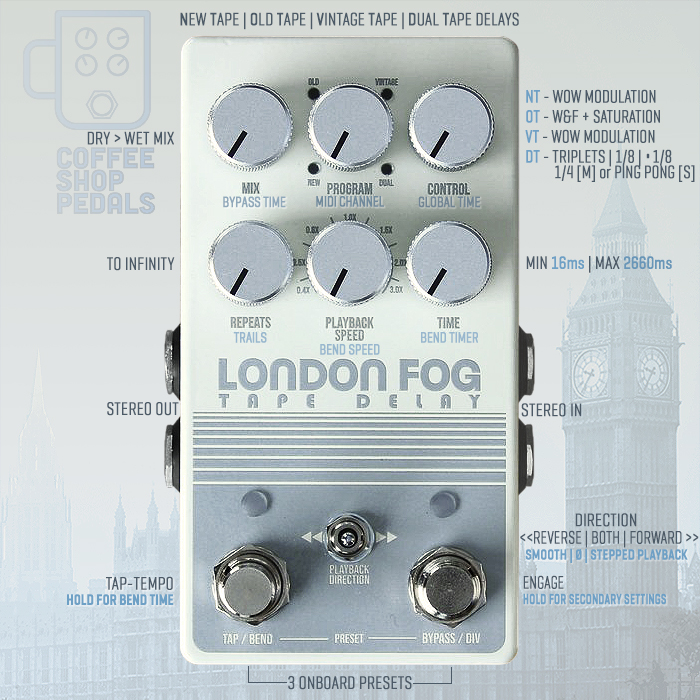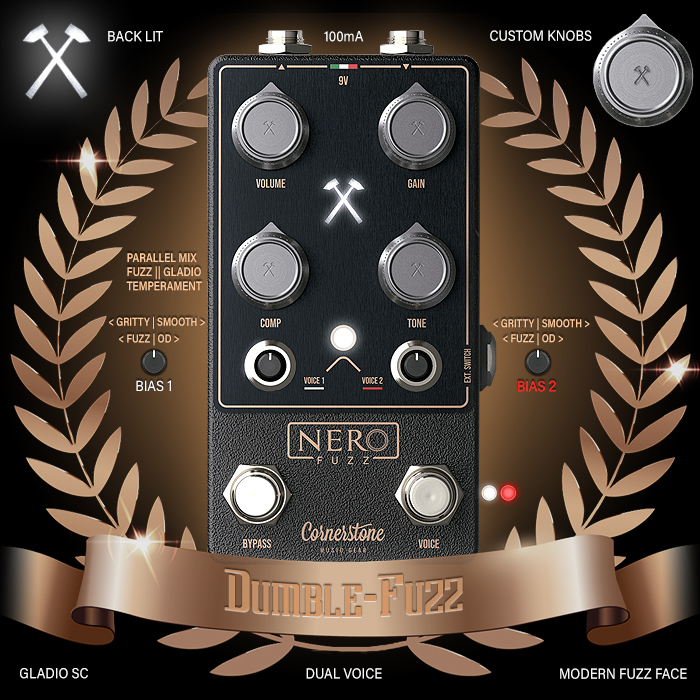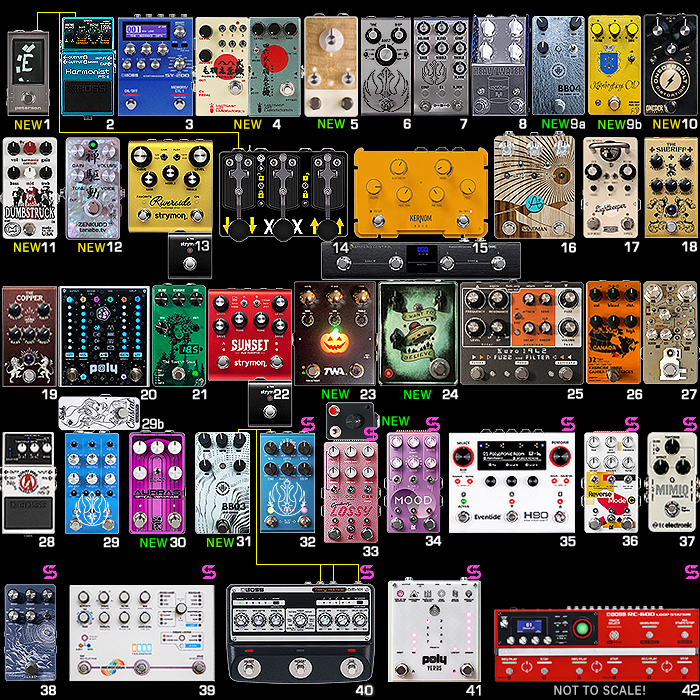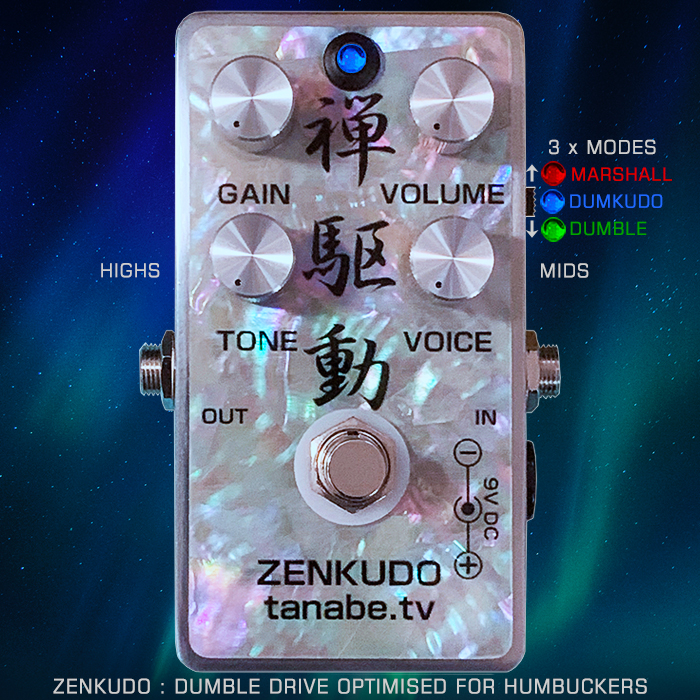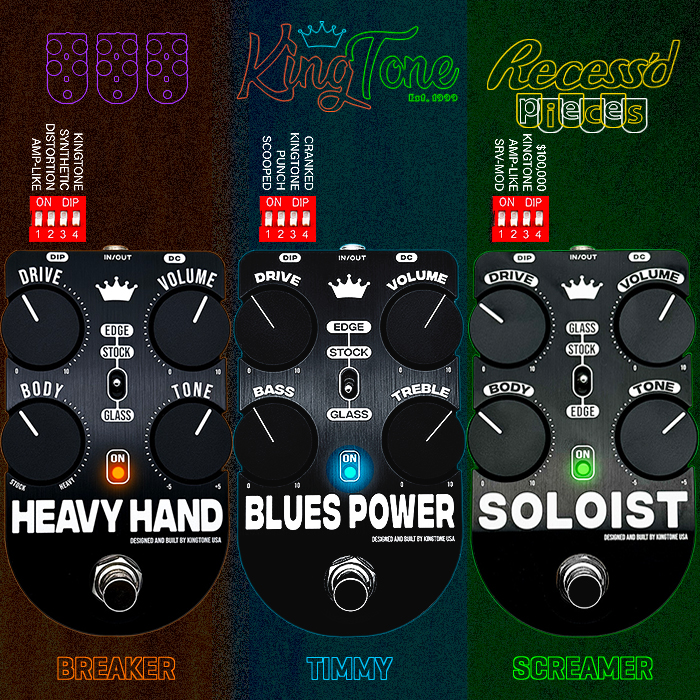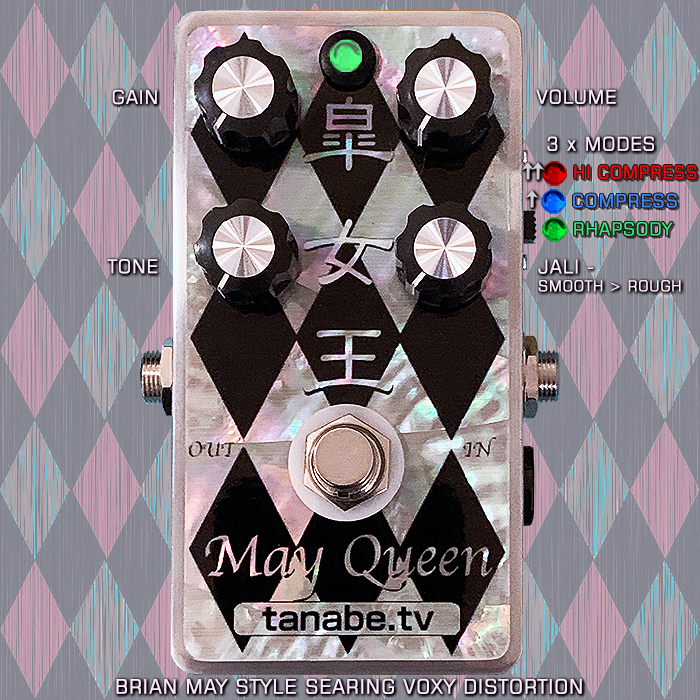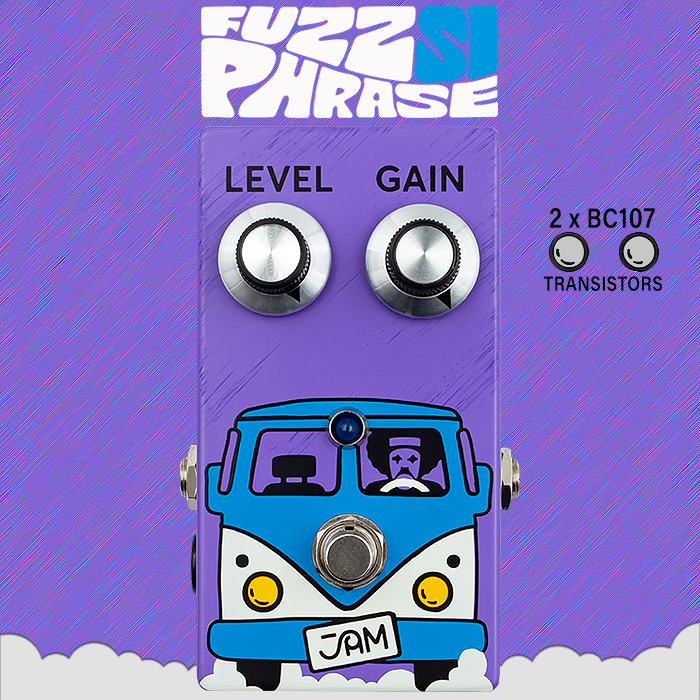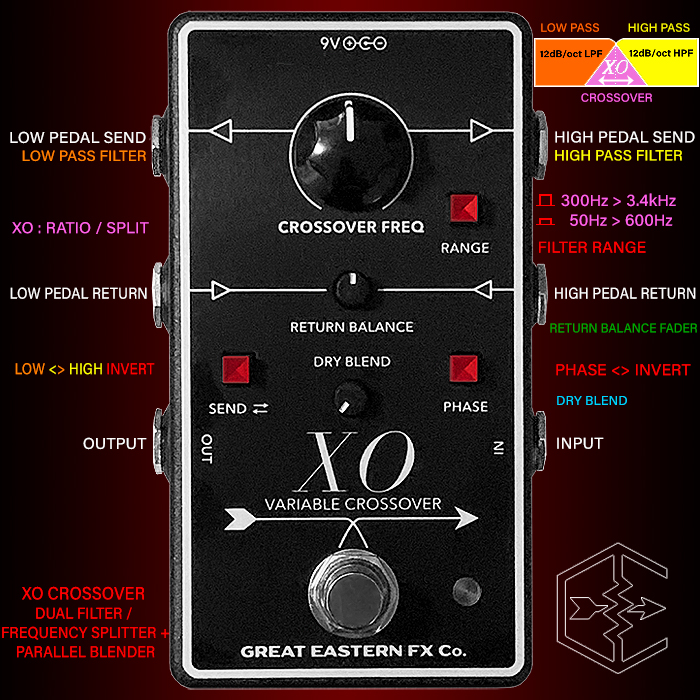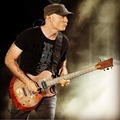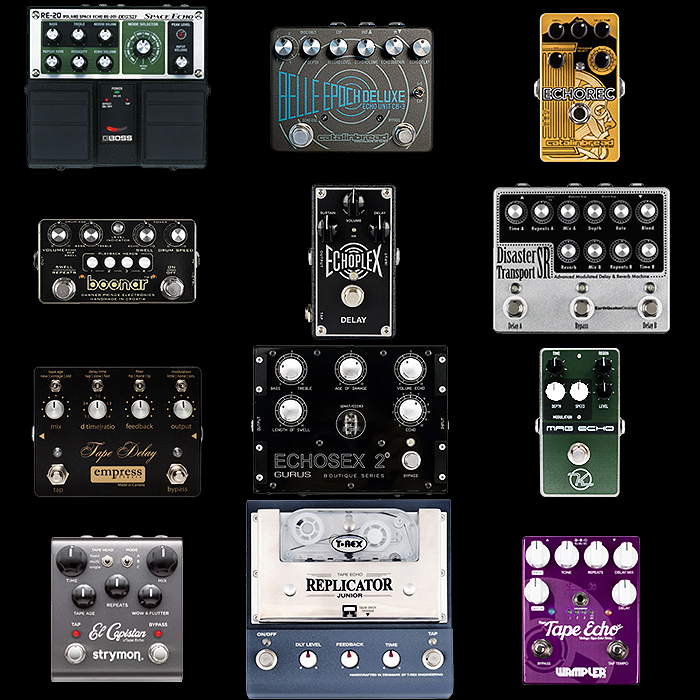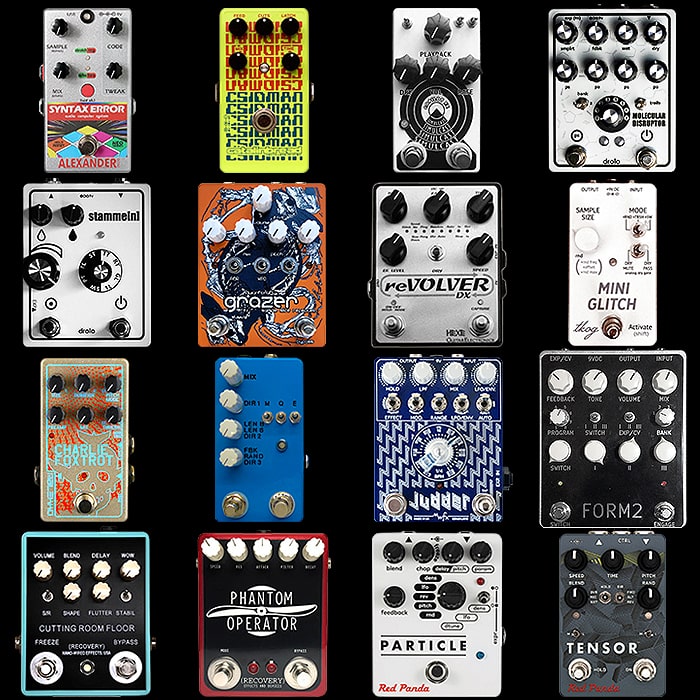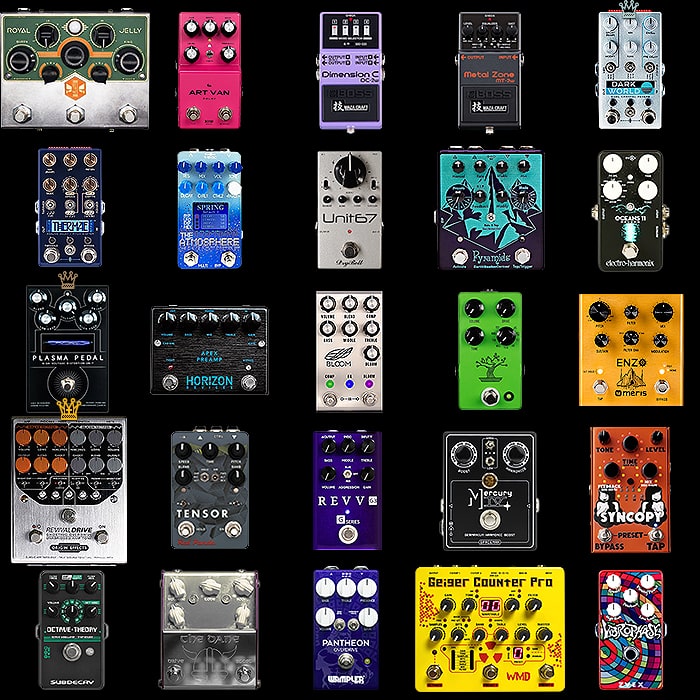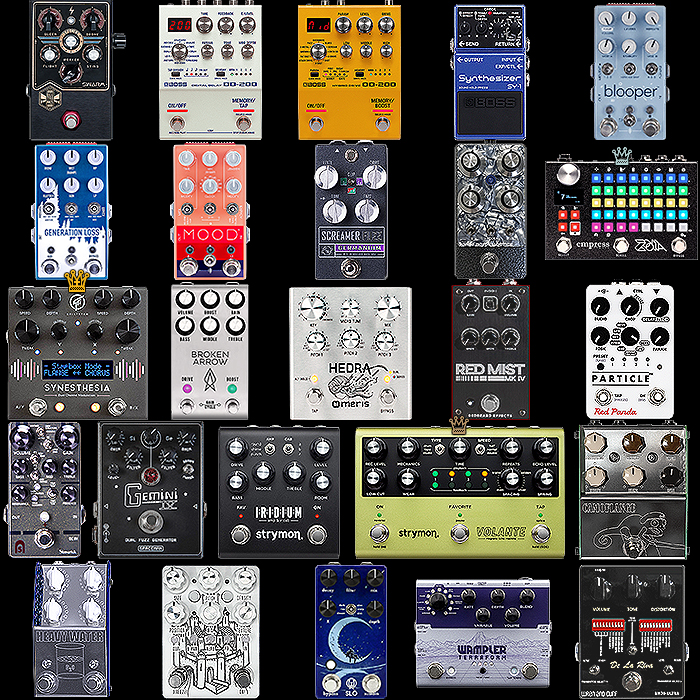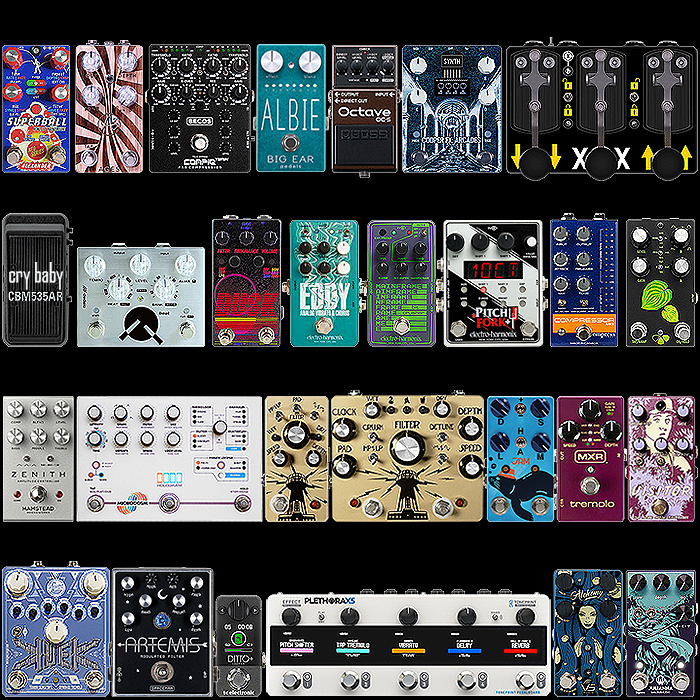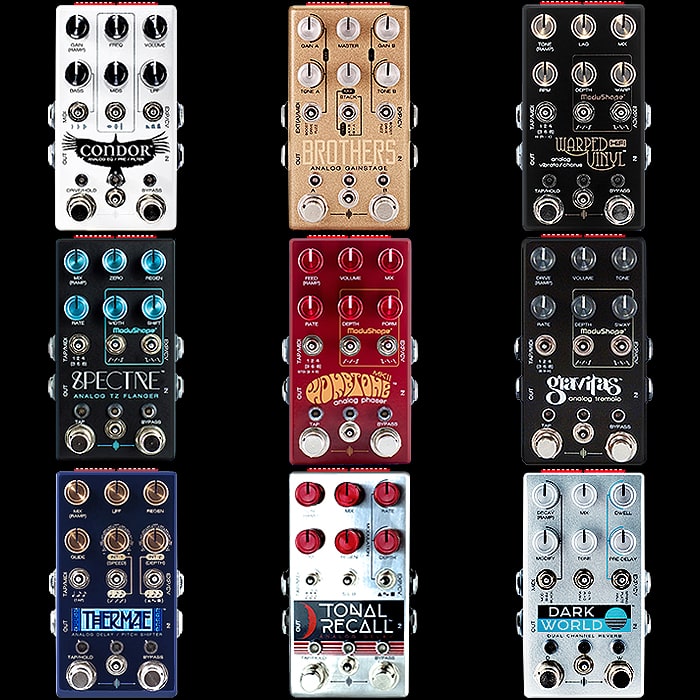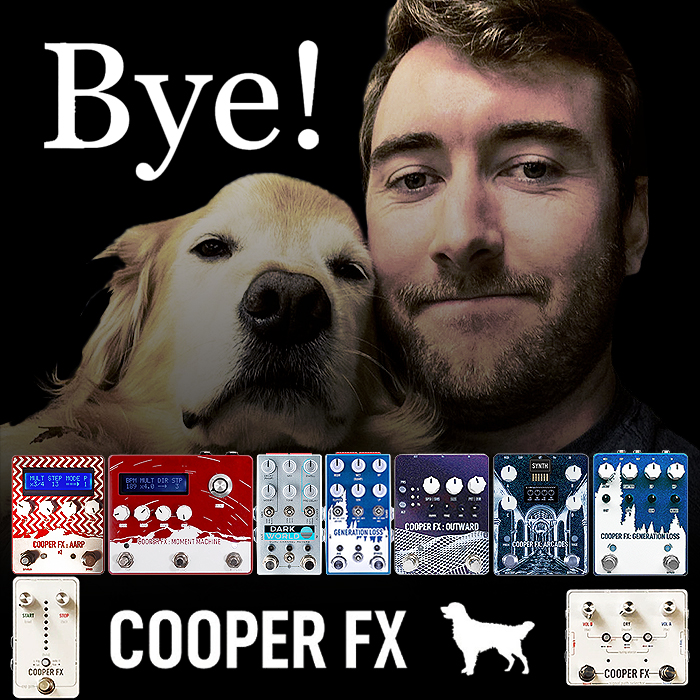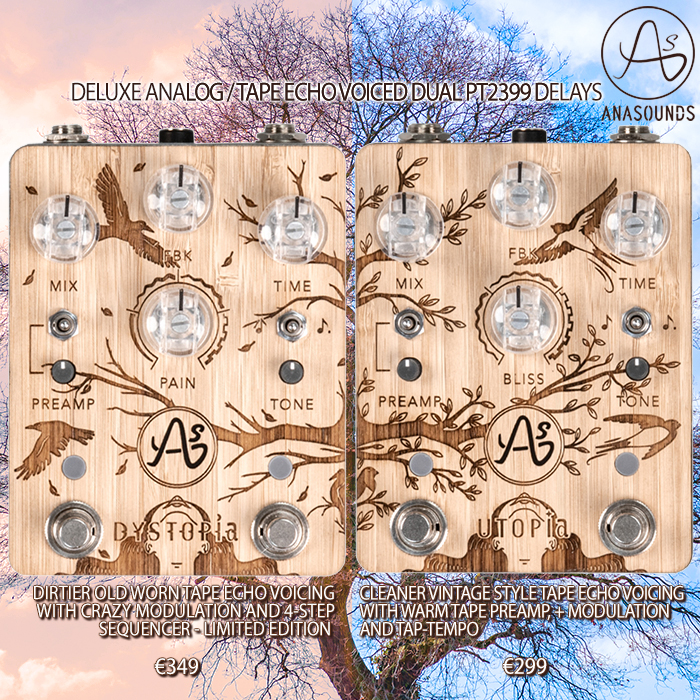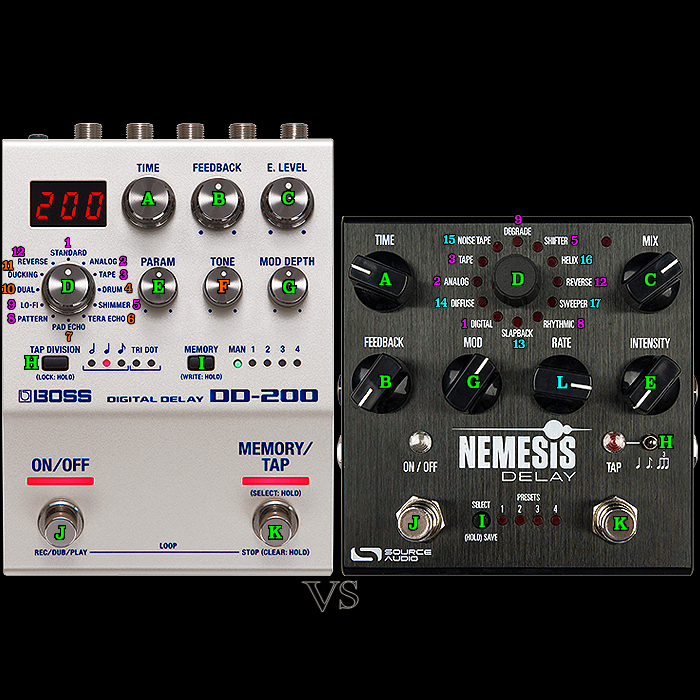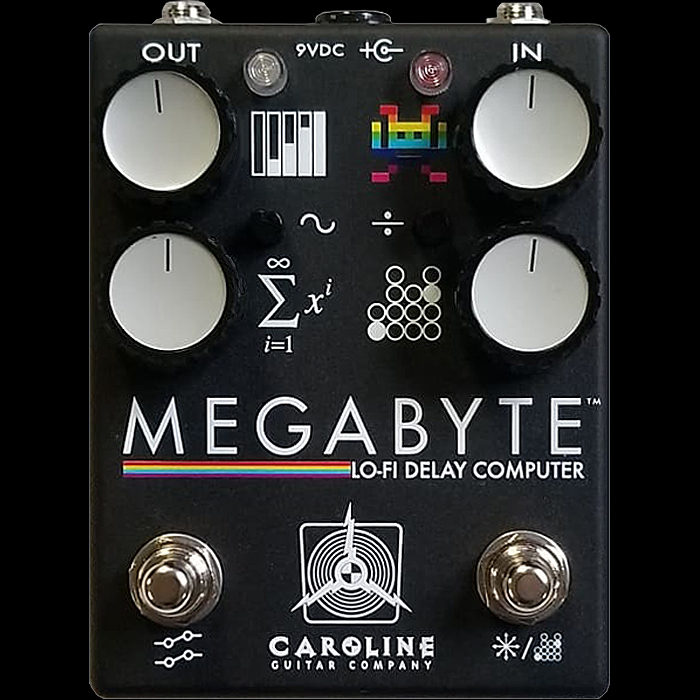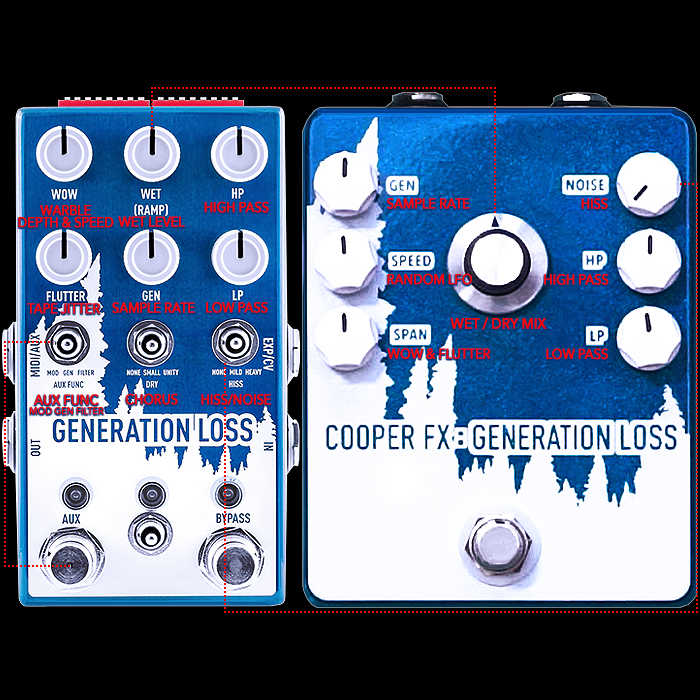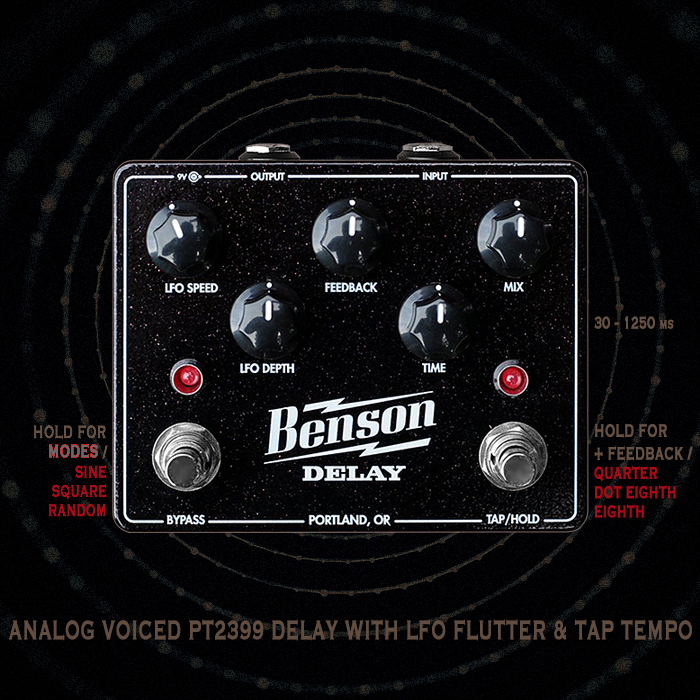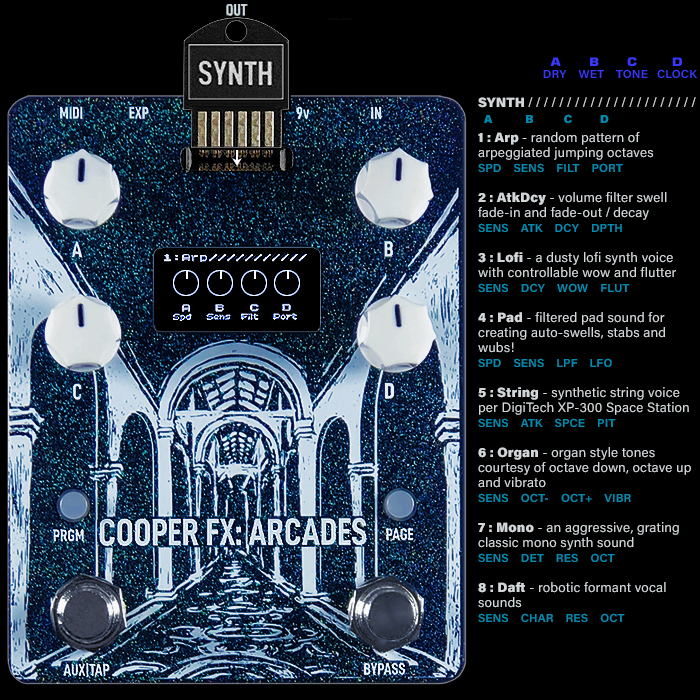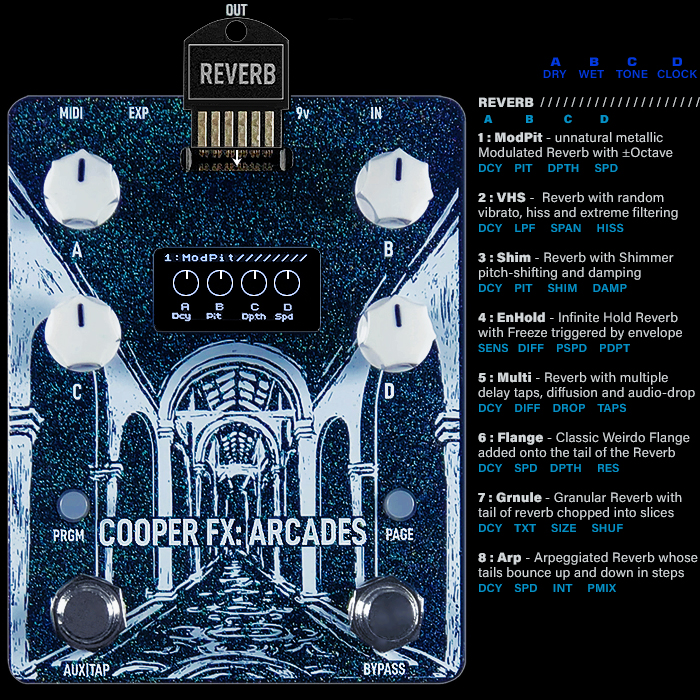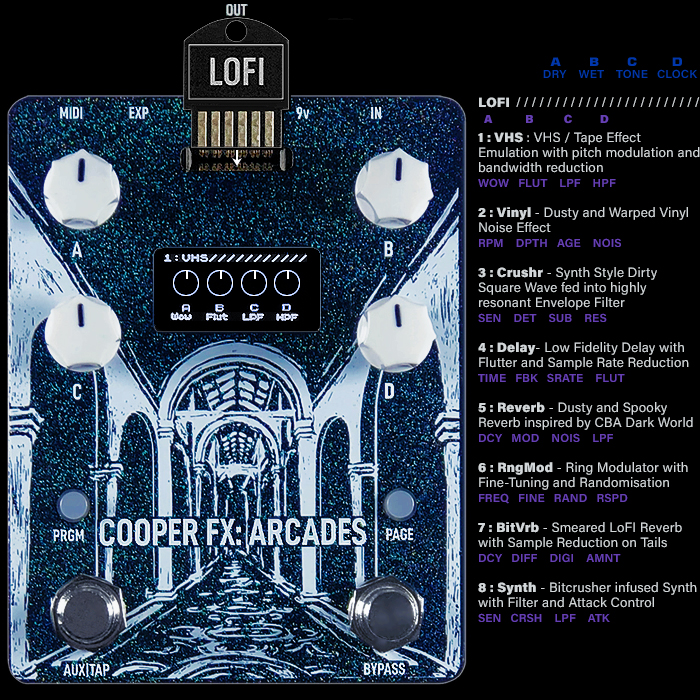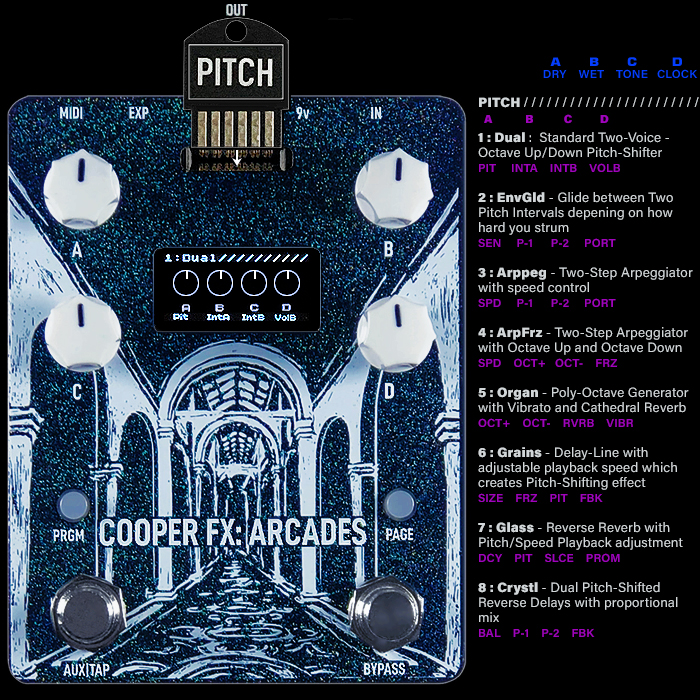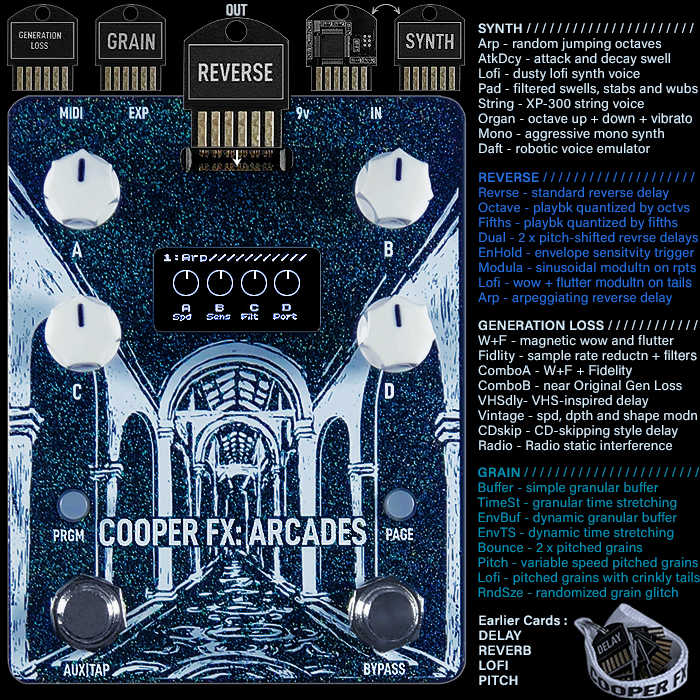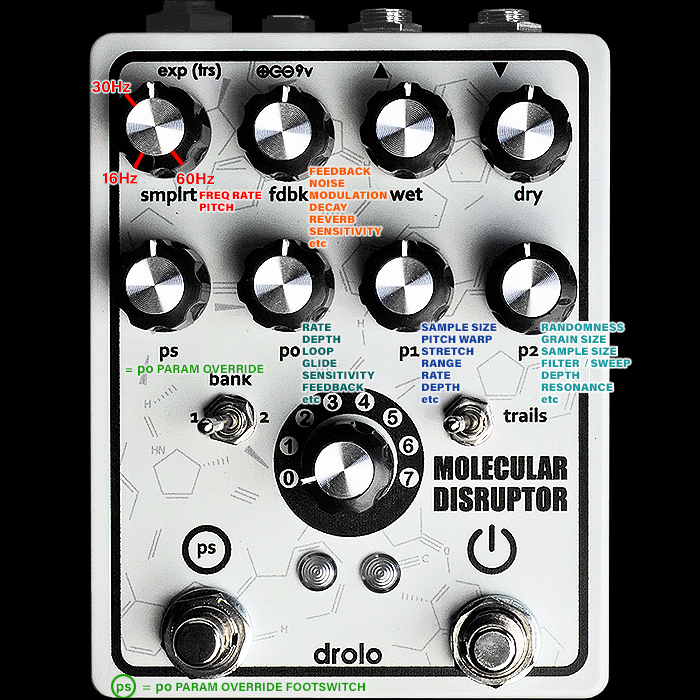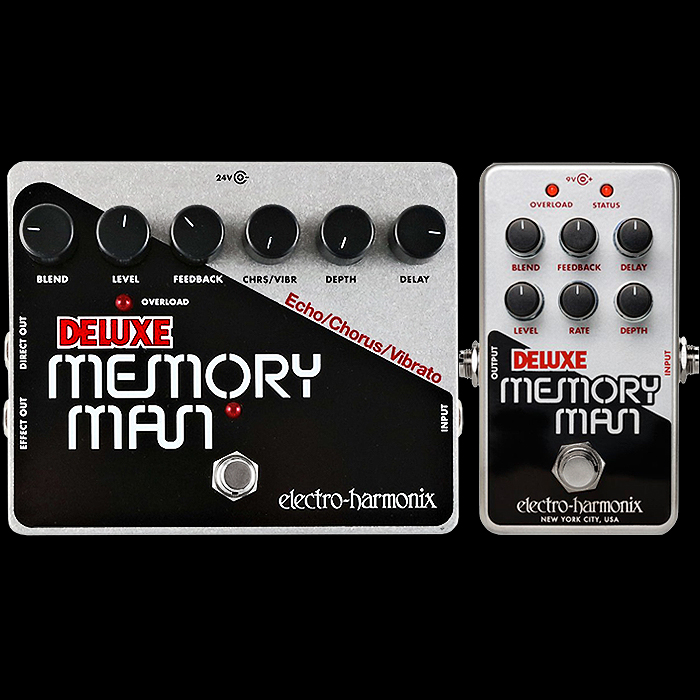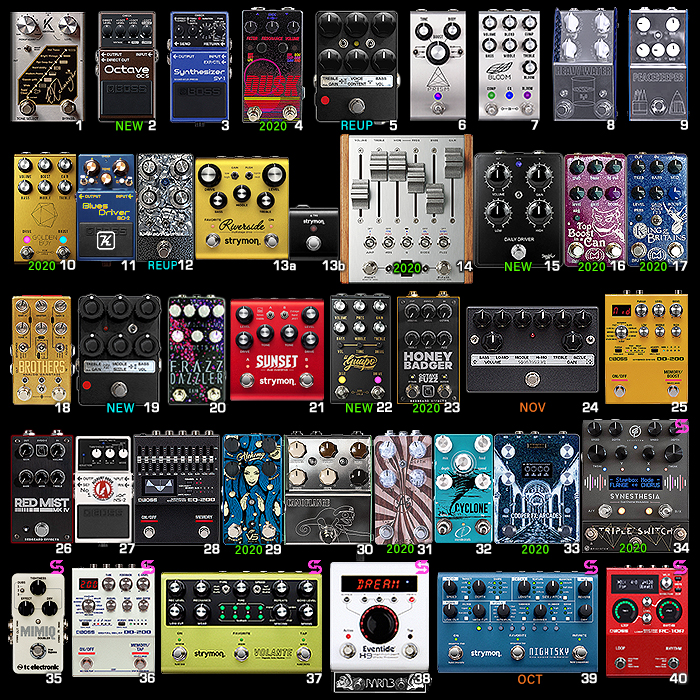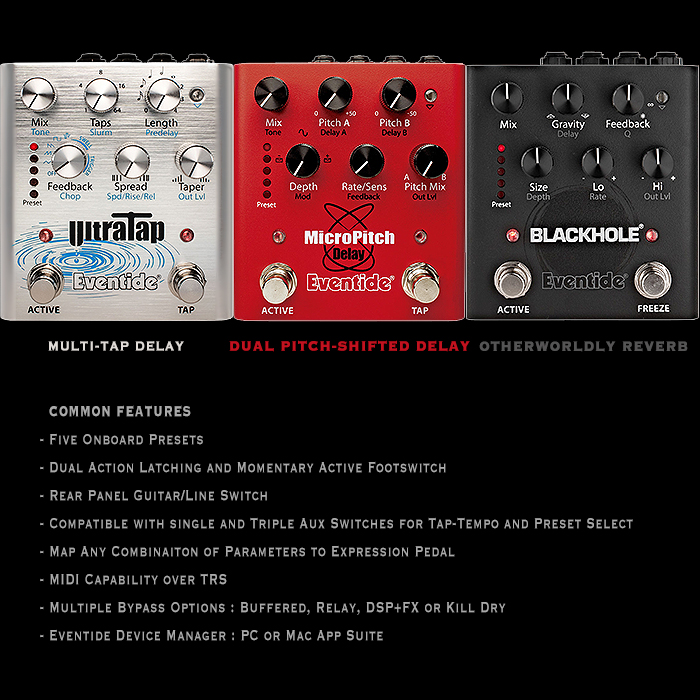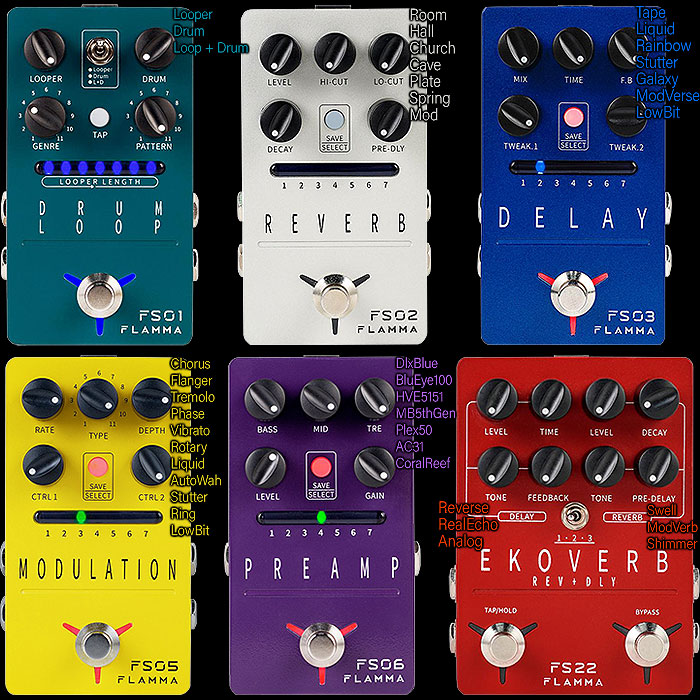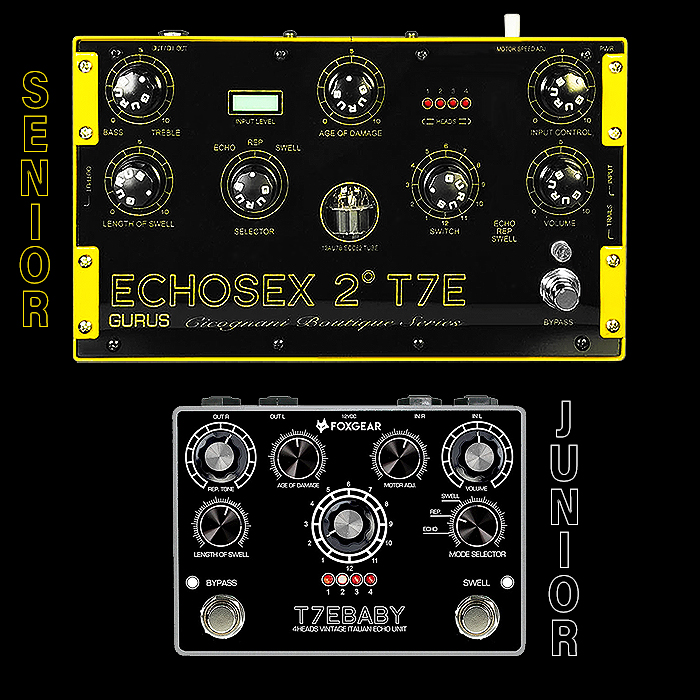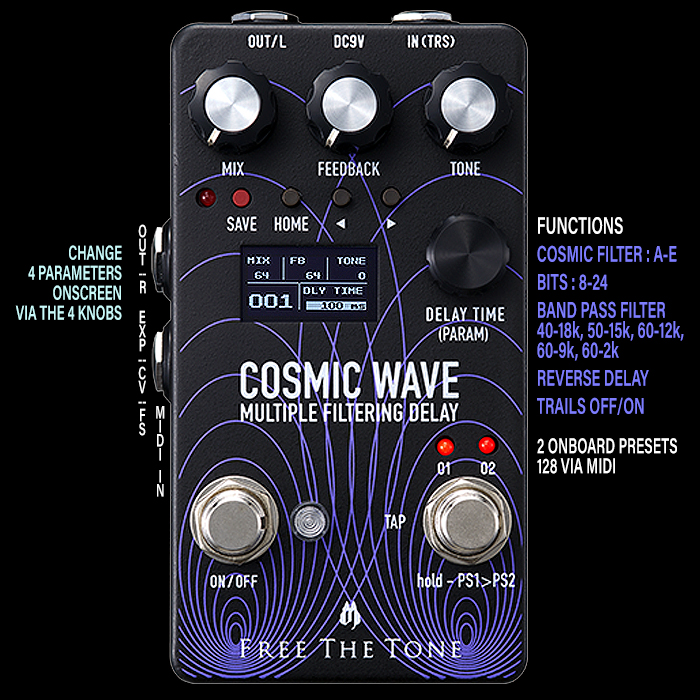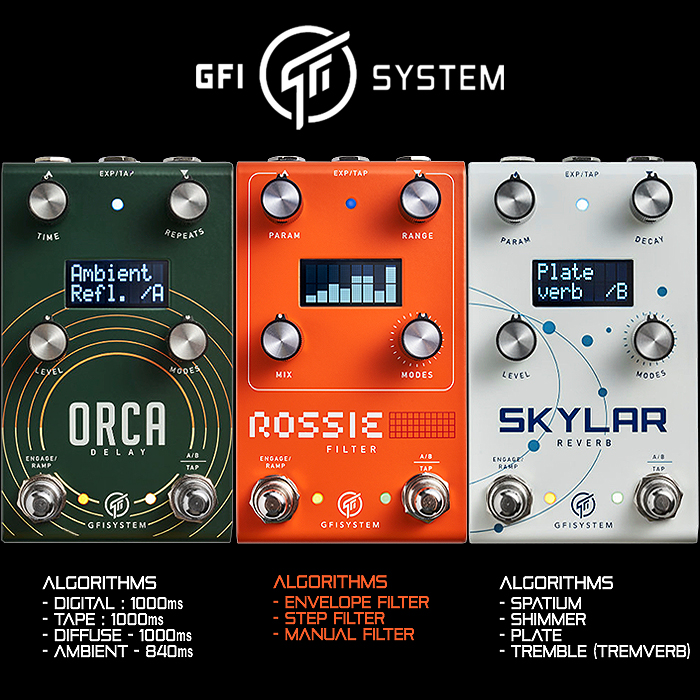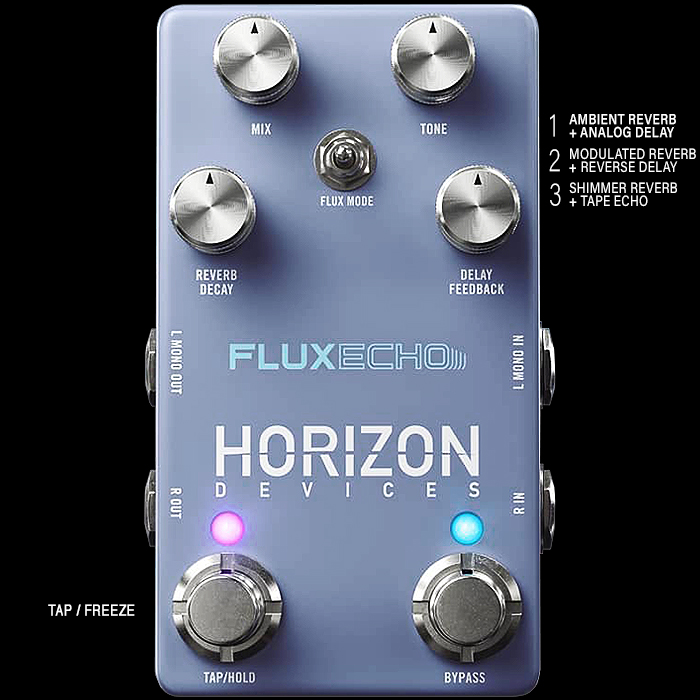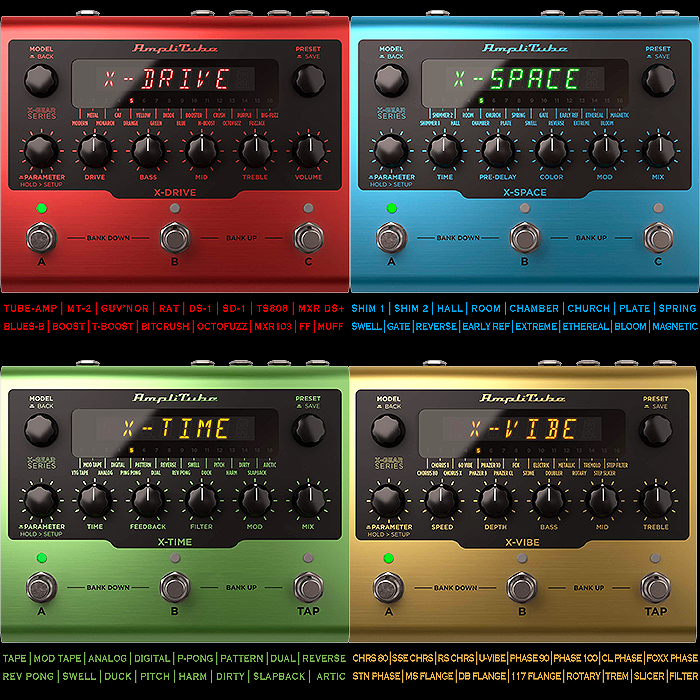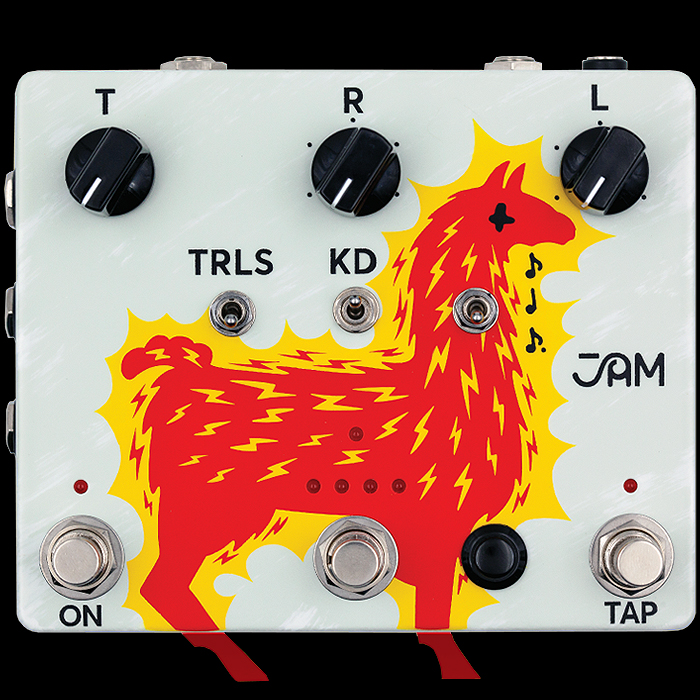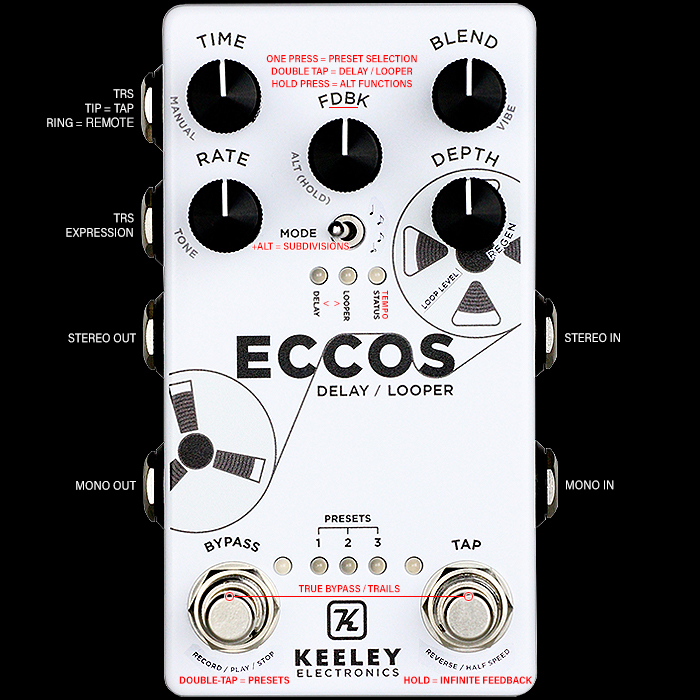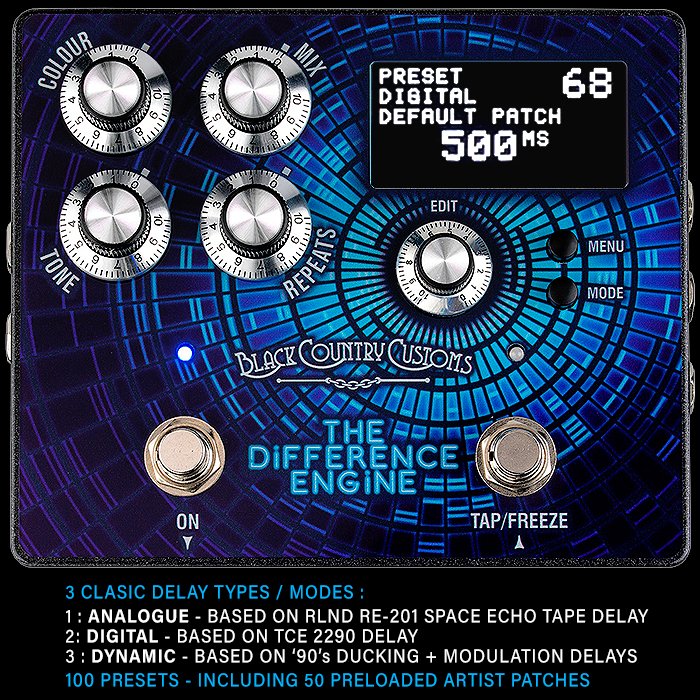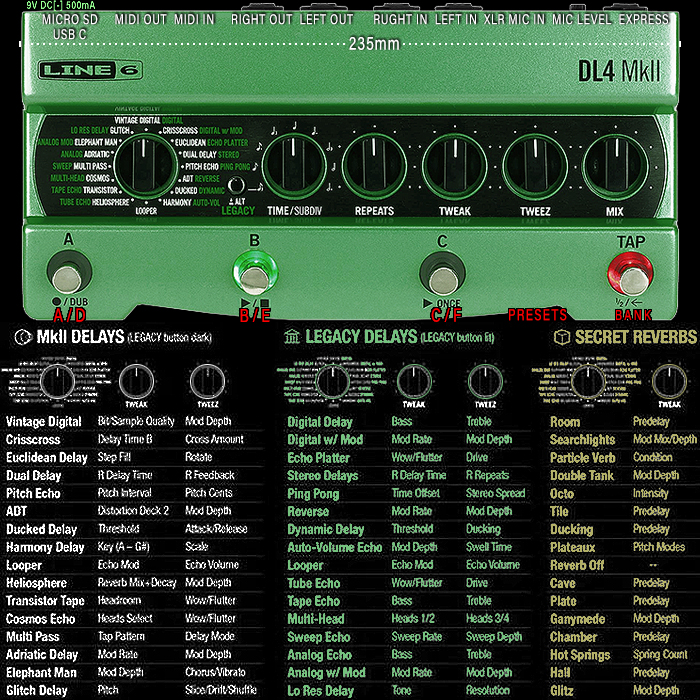Cooper FX Arcades Modular Multi-FX Workstation : Card Spotlight Series #2 : DELAY
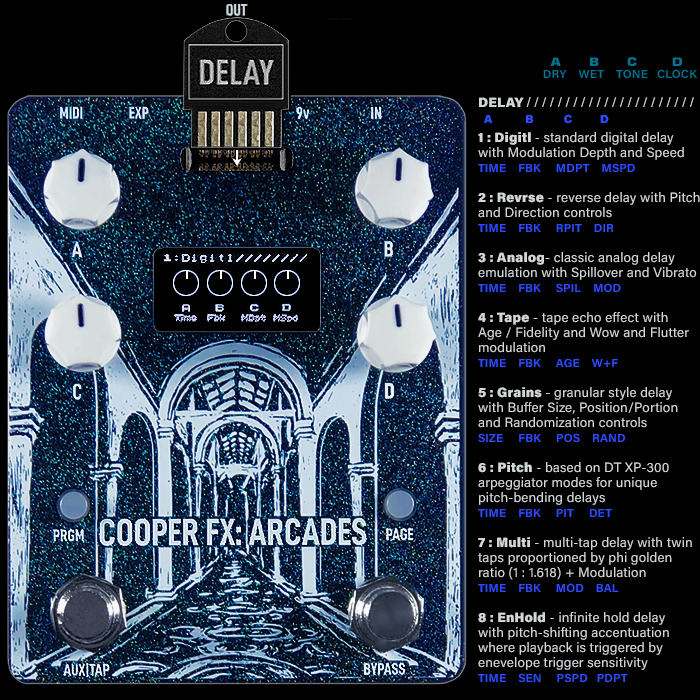
This time around we’ll be looking at probably the most straightforward and vanilla (but not exactly) of the 8 Arcades Cards to date - while each mode / algorithm has a pretty distinct take on each delay sub-type. Generally the delay sounds here are rich and elegant and beautifully musical - with very distinct timbres achievable by clever application of Modulation and Clock Rate / Resolution in particular.
Most of the modes here will be familiar to the average guitarist - with just a single properly quirky ’Grains’ glitch-style mode - overall though the 4 controls per algorithm are really very intuitive and predictable to a greater extent and include Time and Feedback for most algorithms - where Time is tap-tempo-controllable and has an super variable range which depends on the PRGM and Clock settings. Typically it can go from a super low-fi 16 seconds at 2khz to ≃500ms at 62 khz.
Players familiar with Delay pedals should find all the controls utilised here very typical of the genre and really very intuitive and straightforward.
As before you flip between 4 Digital Mode-specific PRGM digital controls and 4 universal analog controls - Dry | Wet | Tone | Clock Rate - courtesy of the PAGE button, while the PRGM button allows you to page through the different Modes / Algorithms.
As with many other cards the Clock Rate control is quite significant here in determining the Time Range and Texture of the repeats - which is further honed by Tone.
TIP 1 : Vary Clock Rate to extend Time range and adjust texture and clarity of repeats
TIP 2 : Different delay modes have different prominence / attack as such - and I found myself often adjusting the WET parameter
TIP 3 : I also found that I used the TONE knob quite a lot for smoothing or accentuating the repeats. Note that Analog can have sort of clock noise artefact in the repeats if Tone is 12 o’c or higher - dialling it back just a little smoothes that off
TIP 4 : Playing technique is critical here - as with a more staccato palm-muted style you get more interesting bounce back and texture / artefacts on repeats
The Delay Card is really very straightforward all-round and easy to dial in - and is good for players of all ability - where more experienced players will be able to extract really fine nuance is the nature and timbre of the repeats.
1 : Digitl - Standard Digital Mode with Modulation
This is a really elegant default delay with some cool modulation effects on the tails - I tend to prefer slightly more subtle Chorus vs Vibrato - but you get some really interesting textures here either way - I believe this is the loudest and most punchiest of repeats - so you may need to temper the WET parameter slightly.
- A : TIME - Delay Time between hitting strings and first audible repeat - also controlled by TAP footswitch
- B : FBK - Feedback - length of decay / number of repeats - turn fully CW for Freeze / Hold Infinite Delay
- C : MDPT - Modulation Depth - Intensity and type of Modulation going from subtle Chorusing through to more substantial Vibrato
- D : MSPD - Modulation Speed - Rate of Modulation LFO
Example / Preferred Settings :
'A' 'B' 'C' 'D'
(10) (2) (11) (5) o'clock (7 is min, 5 is max)
2 : Revrse - Reverse Delay with Pitch and Directional Control
A very tasteful and musical reverse delay where you can get some interesting combinations of Pitch Intervals and Direction. The best Forward/Reverse bounce for me is achieved around 12:30 - 1 o'c, while generally I prefer the more straight-up reverse settings.
- A : TIME - Delay Time between hitting strings and first audible repeat - also controlled by TAP footswitch
- B : FBK - Feedback - length of decay / number of repeats - turn fully CW for Freeze / Hold Infinite Delay
- C : RPIT - Reverse Pitch Intervals = -Octave / -5th / Root / +5th / +Octave
- D : DIR - Direction - blend forward delay repeats with Reverse elements if applied CW - to create beautifully textured harmonics and directional bouncing
Example / Preferred Settings :
'A' 'B' 'C' 'D'
(10) (2) (3) (8) o'clock (7 is min, 5 is max)
3 : Analog - Classic Analog BBD Delay Emulation with simulated BBD-style Spillover and Vibrato
Your classic warm but slightly dark delay with really smart BBD Spill / Spillover simulation and quite strong Vibrato Modulation flavour. I like the Spill to be around noon, and the Modulation very subtle as it comes in pretty strong from the start.
- A : TIME - Delay Time between hitting strings and first audible repeat - also controlled by TAP footswitch
- B : FBK - Feedback - length of decay / number of repeats - turn fully CW for Freeze / Hold Infinite Delay
- C : SPIL - Spill / Spillover - recreates the sound / effect / degree of BBD loss / decay
- D : MOD - Modulation - introduces Vibrato on the delay trails
Example / Preferred Settings :
'A' 'B' 'C' 'D'
(10) (2) (12) (8) o'clock (7 is min, 5 is max)
4 : Tape - Tape Echo style emulation with added Age / Fidelity and Wow and Flutter modulation / warble
Tape has long been my most favoured Delay effect - and hence my reason for utilising the Strymon Volante in that principal role - as an always on Delay Texturizer. The Arcades Tape Delay is quite superb too - with just that right balance of substance and softness. I've always like the signal degradation effects associated with tape transport mechanisms and age - and so I like a fair amount of AGE and Wow+Flutter in the mix too.
- A : TIME - Delay Time between hitting strings and first audible repeat - also controlled by TAP footswitch
- B : FBK - Feedback - length of decay / number of repeats - turn fully CW for Freeze / Hold Infinite Delay
- C : AGE - Age / Fidelity of effect - decreases fidelity / resolution of repeats CW (old and crinkled tape)
- D : W+F - Wow and Flutter - Random Modulation Tape-style Warble to simulate variable transport speed and mechanics
Example / Preferred Settings :
'A' 'B' 'C' 'D'
(10) (2) (3) (3) o'clock (7 is min, 5 is max)
5 : Grains - Granular Style Delay with Buffer Size, Position / Portion Selection and Randomization of Repeats
This is the only distinctly different and slightly unusual delay / glitch effect - where you also have no TIME component as such. Instead you set the Buffer SIZE - the sort of overall sample size / length - with regular Feedback parameters, but then POS - which is the Position or Portion of the Buffer that gets manipulated/repeated. The final parameter Randomization - randomises the relatively Position / Portion within the Buffer. You can get some beautiful sort of crystalline effects here - but it does require careful dial-in. This is one of the modes here that sounds great with everything at noon - or actually just under I think my dials were - so I state 12 - but I guess it's really more like 11:45 o'c if we're being totally accurate.
- A : SIZE - Size / Range of Signal Buffer which you manipulate for repeats
- B : FBK - Feedback - length of decay / number of repeats - turn fully CW for Freeze / Hold Infinite Delay
- C : POS - Position and Portion / Slice of Buffer Sample in tandem with Control A
- D : RAND - Randomization of repeats by Randomizing POS value which is otherwise set by 'C' - fully CW is max randomization
Example / Preferred Settings :
'A' 'B' 'C' 'D'
(12) (12) (12) (12) o'clock (7 is min, 5 is max)
6 : Pitch - Pitch-Shifted Delay based on the Arpeggiator Modes from the DigiTech XP-300 Space Station
I had a lot of fun with this one - but do note that there is some sensitivity between the Pitch Interval and Detune settings - for me it sounded really great and suitably quivery with those settings at 12 and 9 o'c.
- A : TIME - Delay Time between hitting strings and first audible repeat - also controlled by TAP footswitch
- B : FBK - Feedback - length of decay / number of repeats - turn fully CW for Freeze / Hold Infinite
Delay - C : PIT - Pitch Interval = -Octave / -5th / -4th / -M3rd / -m3rd / +2 semi / +m3rd / +M3rd / +4th / +5th / +Octave (M = Major, m = minor)
- D : DET - Detune / Degree of Pitch-Shifting - CCW less, CW more
Example / Preferred Settings :
'A' 'B' 'C' 'D'
(11) (3) (12) (9) o'clock (7 is min, 5 is max)
7 : Multi - Multi-Tap Delay with Twin Tap Delay Lines Offset / Proportioned by phi golden ratio (1 : 1.618)
This was actually my equal favourite mode with the EnHold - here I got some amazing rhythmic swooshy effect which just sounds amazing - I could jam on this setting for hours!
- A : TIME - Delay Time between hitting strings and first audible repeat - also controlled by TAP footswitch
- B : FBK - Feedback - length of decay / number of repeats - turn fully CW for Freeze / Hold Infinite
Delay - C : MOD - Amount and Type of Modulation - more substantial Vibrato but softer CCW and more subtle Chorus but more intense CW
- D : BAL - Balance between the Two Delay Lines - CCW is fully Delay Line 1, CW is fully Delay Line 2, middle is equal blend of each
Example / Preferred Settings :
'A' 'B' 'C' 'D'
(11) (3) (12) (11) o'clock (7 is min, 5 is max)
8 : EnHold - Infinite Hold Delay where Playback is triggered by envelope trigger Sensitivity
Here I ended up with a really cool sort of synthy/vibey style effect with the interaction between the PSPD and PDPT dials just perfect. Had a lot of fun with this mode two which ended up as my equal favourite with the above Multi-Tap Delay
- A : TIME - Delay Time between hitting strings and first audible repeat - also controlled by TAP footswitch
- B : SEN - Sensitivity of Envelope Trigger
- C : PSPD - Pitch Speed or Rate of Pitch Blending
- D : PDPT - Pitch Depth is Amount / Degree of Pitch Blending
Example / Preferred Settings :
'A' 'B' 'C' 'D'
(11) (12) (10) (5) o'clock (7 is min, 5 is max)
Final Thoughts and Take-aways
This Delay Card actually really surprised me as I somehow didn't expect such a consistently high quality throughout all the modes. Each of the Modes sounds among the best of its genre - and where it initially looks like you have rather limited parameters to adjust - each Mode nonetheless has hidden depths of texture and nuance - which you typically cannot find elsewhere.
All modes are relatively easy to dial in - while certain sweet-spot selections require a little more patience. But generally the more time you spend with these algorithms the more you get out of them. I really feel that each of the Modes is pretty stand-out and valid in its own right and I genuinely did not encounter a single meh moment - rather I was constantly surprised by some new depth or degree of subtlety as I explored further.
I achieved really killer settings and sounds on the last two modes in particular - Multi-Tap and Envelope Hold, and also really enjoyed the Tape and Pitch-Shifter modes. Tape is generally my favourite flavour of delay and the one I deploy most often - for which I use my Strymon Volante for mostly, but would be happy to supplement that with this alternative variety. The Arcades Delay Card is easily one of the best Delay pedals in and of itself with those algorithms and those particular sounds - and while I don't believe many will necessarily consider the Arcades as their principal delay pedal - many surely should. I've seen an increasing trend of players buying a second unit - no doubt we will see a setup soon with 3 in a row - particularly as more Cards materialise.
As it is recently, I have tended to mostly use my Strymon Volante, supplemented by the Boss DD-200 and Eventide H9 for particular applications - and in many ways the Arcades Delays will likely become the equal understudy alongside the DD-200.
All in all - a delight to use and really somewhat surprisingly consistently good. There's normally one or two algorithms on a pedal you don't feel particularly excited about - but in this case it's all thriller and no filler! A really great selection of algorithms superbly executed.

